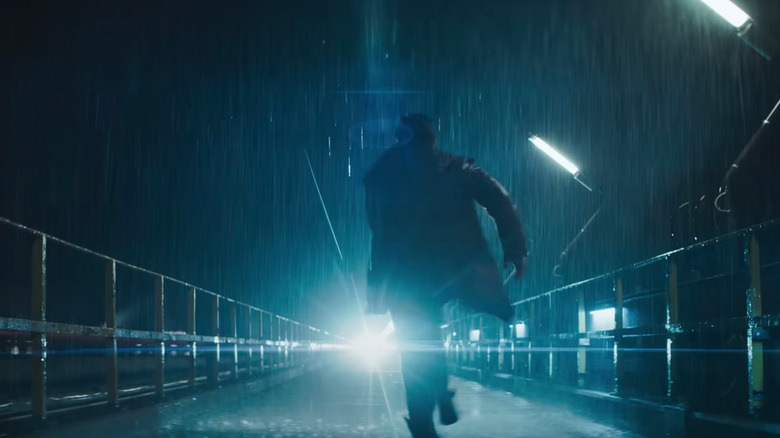Andor's Morlana One Explained
The latest live-action "Star Wars" TV show, "Andor," premieres today, September 21. Set five years before the events of "Star Wars: A New Hope," the series follows Cassian Andor (Diego Luna), a mercenary scoundrel who becomes a rookie member of the fledgling Rebel Alliance. Over the show's two seasons, (the second of which was already renewed back in May), it will fill in the gaps in the story that leads Andor to steal the plans to the Death Star, which he does in "Rogue One: A Star Wars Story."
While shows like "The Mandalorian" and "Obi-Wan Kenobi" have brought fans back to familiar "Star Wars" locales like the desert planet Tatooione, "Andor" will bring us to a relatively unfamiliar corner of the "Star Wars" galaxy. Only one of the four major planets on the show, Coruscant, has been featured in "Star Wars" movies and TV shows before. The other three–Kenari, Ferrix, and Morlana One–are all brand-new creations.
The sets were built entirely with practical effects instead of the Volume video wall Disney has used to film many recent "Star Wars" projects (via Empire Online). For Showrunner Tony Gilroy, creating these worlds felt like playing god.
Each of these planets has a unique, specific, lived-in feel. Kenari is a lush tropical world where people live in small tribes and don't speak Basic, (the "Star Wars" equivalent of English). It's relatively untouched by the Empire. Ferrix is a desert planet home to countless crashed starships. This has led to an economy based entirely on salvage. Coruscant is the capital of the Galactic Empire, a planet that's basically one giant city.
Then there's Morlana One, which feels unlike practically any other planet in science fiction.
Morlana One is a planet governed by a corporation
Overall, Morlana One is a mining planet ruled by the Preox-Morlana corporation. While Preox-Morlana does report to the Galactic Empire, it's an entity unto itself. It has its own security force that can investigate crimes and make arrests, all of which will come into play as the series goes on.
The Preox-Morlana corporation controls nearly every aspect of life on Morlana One, not just the government. Its citizens are also its workers. In this way, it resembles the mining towns in the American Old West, where single companies controlled everything. Naturally this leads to oppressive conditions, the kind that would drive someone to join a rebellion.
Morlana One is the first place "Andor" visits. In the opening scenes, Andor goes into a Morlana One brothel in search of his sister, only to run afoul of two Preox-Morlana security officers, nicknamed "corpos," whom he's forced to kill. This puts Preox-Morlana Deputy Inspector Syril Karn (Kyle Soller) on Andor's trail, and soon he becomes obsessed with hunting him down (via Inverse).
Few other planets in science fiction resemble Morlana One
Like real life, science fiction is full of massive corporations that basically have the same power as governments, like Weyland-Yutani from "Alien," the Tyrell Corporation from "Bladerunner," or Arasaka from "Cyberpunk 2077. It's also full of planets that are governed by one and only one government, like Gallifrey from "Doctor Who" or Krypton in "Man of Steel."
However, a planet that's ruled by a corporation is rare, both in "Star Wars" and in science fiction in general.
The nearest equivalent in "Star Wars" comes from the Legends timeline, which Disney famously removed from the canon when it purchased Lucasfilm. Nevertheless, it's the closest idea we have to what a corporate planet in "Star Wars" would look like.
The Corporate Sector is a region in the Outer Rim governed by a series of corporations under the sway of the Galactic Empire. It's the setting of the "Han Solo Adventures" novel trilogy that was published in the early 1990's, as well as the accompanying roleplaying game, Han Solo and the Corporate Sector Sourcebook. However, given that these books are three decades old and not canon, they're not much of a guide when it comes to Morlana One.
Plenty of "Star Wars" planets are governed by oppressive regimes, but this is a rare case where the government is motivated by profit, not power.


